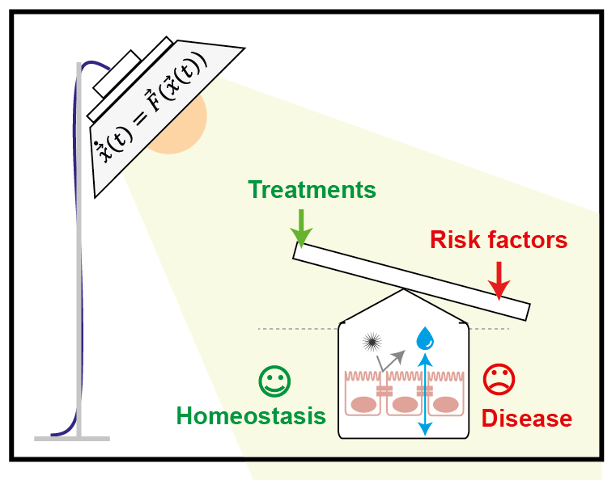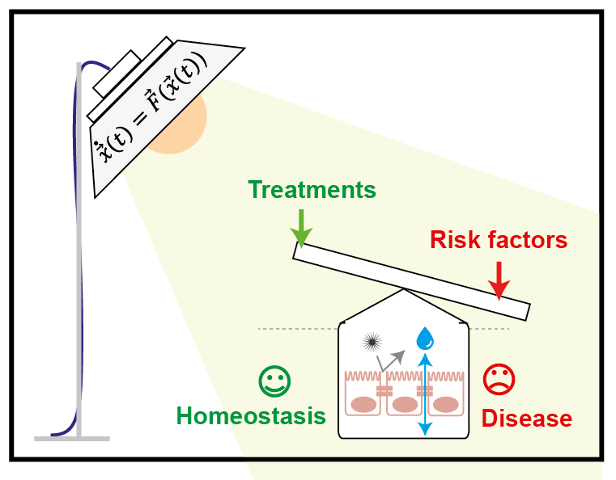[:is] Math colloquium
Fyrirlesari: Elisa Domínguez-Hüttinger, Universidad Nacional Autónoma de México
Titill: A “triple-switch” hybrid mathematical model of epidermal homeostasis.
Staðsetning: Via Zoom. Link to be sent.
Tími: Föstudag 13.nóvember kl.14:00
Ágrip:
The epidermis is the outermost layer of the skin. It is a stratified epithelium, constituted by layers of epithelial cells (keratinocytes) with increasing levels of differentiation. The basal layer is formed by undifferentiated cells with proliferative capacity, while the most external layer, termed skin barrier, is formed by terminally differentiated cells that are embedded in a lipid matrix. This skin barrier hinders the invasion of pathogens and other aggressors, protecting the organism from environmental disturbances. Transient environmental perturbations that increase the pathogen load or damage the skin barrier can trigger both immune and tissue remodelling responses, resulting in increased pathogen elimination but also affecting its infiltration rate. Under healthy conditions, this complex feedback control structure effectively counteracts environmental aggressors. However, perturbations by genetic and environmental factors can lead to the loss of homeostasis and the onset and progression of complex epidermal tissue diseases including atopic dermatitis, psoriasis and skin carcinomas. Characterizing the responses of the epidermis to these perturbations is pivotal to uncover pathogenic mechanisms and improve strategies for diagnosis, prevention and treatment of these diseases. However, this task is difficult to achieve from a purely experimental or clinical perspective, because these perturbations: (1) Often lead to synergic and non-linear responses that are hard to predict experimentally; (2) Can affect several regulatory processes that operate at different time scales; (3) May result in symptoms that are clinically subtle; and (4) Can affect disease progression in a history-dependent manner. Here we propose a triple-switch mathematical model that couples a bistable motifs describing the activation of innate and adaptive immune responses as well as the differentiation of skin cells with the dynamically changing tissue level properties. We will show how mathematical analysis of this hybrid model has allowed us to: (1) Characterize the effects of genetic and environmental perturbations on epithelial homeostasis; (2) Identify risk factors that increase the vulnerability to environmental aggressors, and (3) Design new strategies for early detection and prevention of complex epidermal diseases.
[:en]
Math colloquium
Speakers: Elisa Domínguez-Hüttinger, Universidad Nacional Autónoma de México
Title: A “triple-switch” hybrid mathematical model of epidermal homeostasis.
Room: Via Zoom. Link to be sent.
Time: Friday 13th November, 14:00
Abstract:
The epidermis is the outermost layer of the skin. It is a stratified epithelium, constituted by layers of epithelial cells (keratinocytes) with increasing levels of differentiation. The basal layer is formed by undifferentiated cells with proliferative capacity, while the most external layer, termed skin barrier, is formed by terminally differentiated cells that are embedded in a lipid matrix. This skin barrier hinders the invasion of pathogens and other aggressors, protecting the organism from environmental disturbances. Transient environmental perturbations that increase the pathogen load or damage the skin barrier can trigger both immune and tissue remodelling responses, resulting in increased pathogen elimination but also affecting its infiltration rate. Under healthy conditions, this complex feedback control structure effectively counteracts environmental aggressors. However, perturbations by genetic and environmental factors can lead to the loss of homeostasis and the onset and progression of complex epidermal tissue diseases including atopic dermatitis, psoriasis and skin carcinomas. Characterizing the responses of the epidermis to these perturbations is pivotal to uncover pathogenic mechanisms and improve strategies for diagnosis, prevention and treatment of these diseases. However, this task is difficult to achieve from a purely experimental or clinical perspective, because these perturbations: (1) Often lead to synergic and non-linear responses that are hard to predict experimentally; (2) Can affect several regulatory processes that operate at different time scales; (3) May result in symptoms that are clinically subtle; and (4) Can affect disease progression in a history-dependent manner. Here we propose a triple-switch mathematical model that couples a bistable motifs describing the activation of innate and adaptive immune responses as well as the differentiation of skin cells with the dynamically changing tissue level properties. We will show how mathematical analysis of this hybrid model has allowed us to: (1) Characterize the effects of genetic and environmental perturbations on epithelial homeostasis; (2) Identify risk factors that increase the vulnerability to environmental aggressors, and (3) Design new strategies for early detection and prevention of complex epidermal diseases.

.[:]

